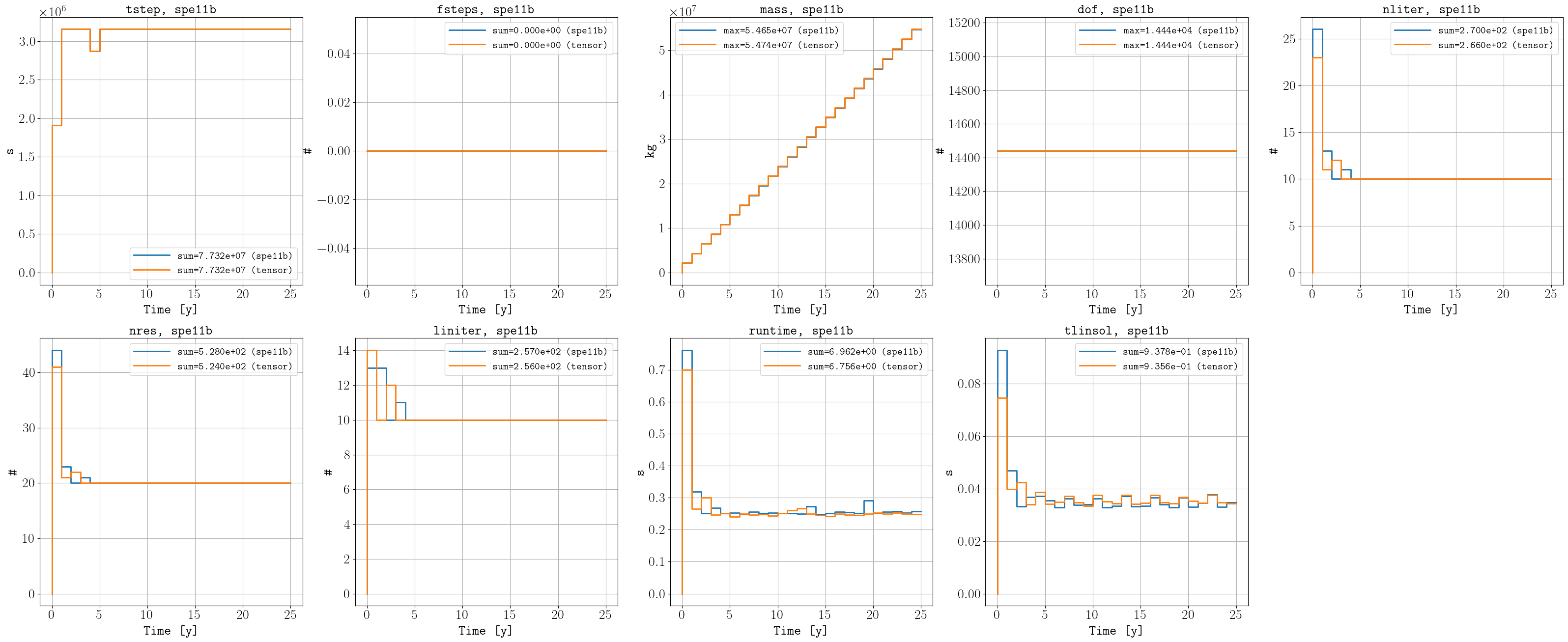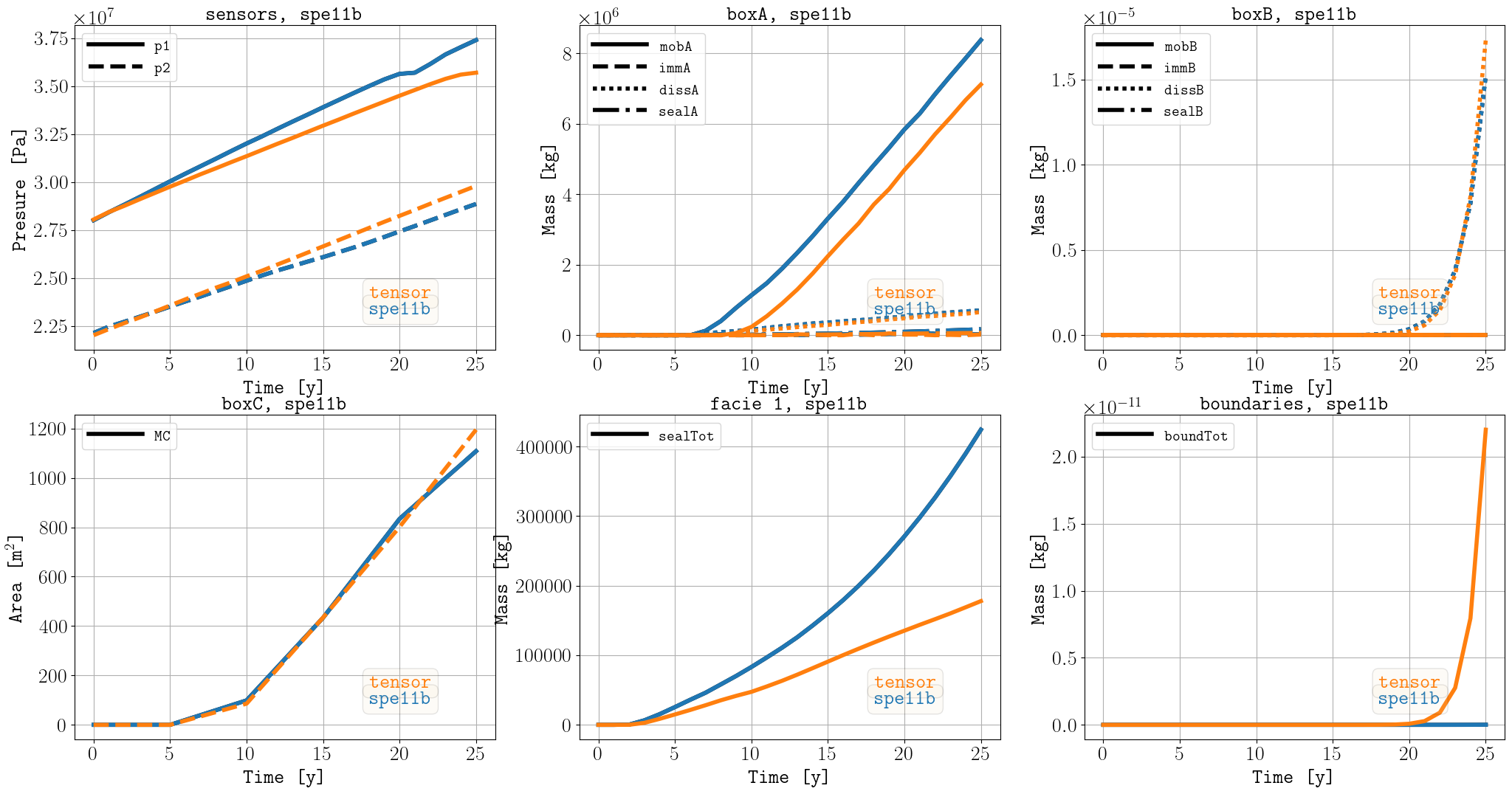Examples
Hello world
The examples folder contains configuration files with low grid resolution and shorter injection times (for initial testing of the framework). For example, by executing:
pyopmspe11 -i spe11b.txt -o spe11b -m all -g all -t 5 -r 50,1,15 -w 1
The following is the figure spe11b_tco2_2Dmaps, which shows the CO2 mass in the domain over time (i.e., the simulations results from the corner-point grid mapped to the equidistance reporting grid of 50 x 15 as defined by the -r flag). You can compare your example results to this figure to evaluate if your example ran correctly:

Note
To generate only the input files, this can be achieved by executing:
pyopmspe11 -i spe11b.txt -o spe11b -m deck
This does not required to have OPM Flow installed, and in principle should work in Windows without using the subsystem for Linux. Then, one could always generate a deck with the grid and all include files, and modify them in order to use other simulators different than OPM Flow.
Using the toml format, the previous run is equivalent to (this requires a Python version of at least 3.11 [due to tomllib]):
pyopmspe11 -i spe11b.toml -o spe11b -m all -g all -t 5 -r 50,1,15 -w 1
Let us now change the grid type from corner-point to tensor in line 7 of the configuration file. Then, we run the simulations and we save the results in a different output folder:
pyopmspe11 -i spe11b.txt -o spe11b_tensor_grid -m deck_flow_data -g performance_sparse -t 5 -r 50,1,15 -w 1
Here we have just set the framework to generate the deck, run the simulations, and generate the performance and sparse data. Then, to visualize the comparison between both runs, this can be achived by executing:
pyopmspe11 -c spe11b
The following are some of the figures generated in the compare folder:


Tip
This example shows how to use plopm to generate nice figures to compare simulation results (both from csv files (e.g., using the benchmark data set ) and from OPM Flow output files).
This example uses a very coarser grid to run fast. See the benchmark section for finer grids.